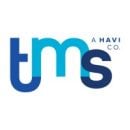For UX Designer Phillip Fernandez, collaborating with other departments at The Marketing Store hasn’t simply saved his team time — it’s led to the creation of better products.
Relying on weekly check-ins and project communication channels to share ideas and feedback, Fernandez and his fellow designers work in tandem with various business units, including account management, to ensure each product they deliver addresses every possible need. He says this teamwork recently played a major role in the successful launch of a digital experience the company created for a major brand.
“Without connecting cross-functionally, timelines would have been pushed out and the experience or visual design might have been altered, ultimately impacting every team involved,” Fernandez said.
Of course, strong cross-team collaboration doesn’t simply manifest overnight. According to One North UX/UI Studio Manager Benjamin Ellis, teammates must maintain active curiosity to reap the benefits of widespread collaboration. In his mind, inquisitiveness enables designers to learn more about outside team members and the impact of partnering with them.
“We have the chance to learn more about their practices, abilities and limitations and recognize our designs not only as an end product, but as a holistic part of creative collaboration,” Ellis said.
For both Fernandez and Ellis, great design work relies just as much on teamwork as it does artistry. Built In Chicago caught up with the two designers to learn about their strategies for cross-functional collaboration.
The Marketing Store is a global customer engagement agency that develops a wide range of solutions, such as in-store experiences, loyalty programs and social media campaigns.
What are the benefits of embedding designers on cross-functional teams rather than keeping them within a single, centralized unit?
Being embedded with other disciplines helps UX designers develop and design a better product suitable for every team involved in the process. By understanding the needs of every team, I'm able to not only save time and increase efficiency, but also leverage different perspectives to craft new solutions.
For instance, I collaborated with several teams to launch the McDonald's Happy Meal digital experience. My teammates and I worked alongside our toy engineers to tackle the limitations associated with having a physical toy interact with a digital device. By providing research to our packaging team, we made the box easier to read and understand. In collaboration with our development teams, I was able to design an experience based on what they could feasibly build in accordance with our launch date.
How do you avoid becoming siloed off from the other designers at your company? How do you approach knowledge-sharing, collaboration and feedback?
My team takes part in weekly check-ins to discuss current projects, share information related to user experiences or user interactions, and exchange constructive feedback. The creative team will create a private channel for each project on Microsoft Teams so that everyone involved in the process, including copywriters and media designers, can share knowledge, ask questions, collaborate, and offer input.
By understanding the needs of every team, I'm able to not only save time and increase efficiency, but also leverage different perspectives to craft new solutions.
How does a designer's work change when they are embedded with product managers, engineers and others?
Considering my role is embedded with other product disciplines, such as account management, product ownership, product engineering and digital accessibility, I'm involved in multiple meetings among cross-discipline teams. This enables me to provide feedback and lend a UX perspective as different teams solve specific issues throughout the design process, ensuring design has been involved in every product from start to launch.
One North is a full-service digital agency that offers a variety of services, from brand activation and digital asset management to performance optimization and digital experiences.
What are the benefits of embedding designers on cross-functional teams rather than keeping them within a single, centralized unit?
When designers are embedded in a multidisciplinary team, they can ensure their design intent is carried all the way through delivery while finding new opportunities for improvement as designs are utilized. Creativity increases when team members with diverse backgrounds and skill sets collaborate and collectively gain insights at every stage of the project, from strategy to design and development. We can provide better weight and prioritization for individual features in our backlog during initial planning conversations.
This collaboration often also identifies common experiences and frameworks that can be replicated based on industry standards, giving us more time to create and develop innovative experiences where it matters. For example, if we wish to build a new mobile app, we can leverage insights from our design and development team members to utilize a common biometric login system available on those platforms. This gives us more time to create engaging experiences, such as tailoring our application to meet users’ needs once they have successfully created an account and logged in.
How do you avoid becoming siloed off from the other designers at your company? How do you approach knowledge-sharing, collaboration and feedback?
It’s important to actively stay curious. Designers are naturally curious; it’s one of our superpowers. We stay inquisitive regarding new design patterns and trends, novel ways of working, inspiring art and perception-altering experiences. Curiosity makes us approachable, empowered, open-minded and considerate when communicating with others. It’s important to remember that our partners in other disciplines spent just as much time honing their crafts as we did. Their experiences may not be the same as ours, which influences their feedback. Actively staying curious when collaborating with other teams helps us uncover a vast wealth of knowledge. Being inquisitive empowers you to ask, “Why?” It inspires you to explore and discover a better design that is easier to implement.
Actively staying curious when collaborating with other teams helps us uncover a vast wealth of knowledge.
How does a designer's work change when they are embedded with product managers, engineers and others?
By working together, the workday is more fluid and collaborative. It makes it easier for outside team members to understand the factors influencing others’ work and find solutions that benefit everyone. By being actively present during cross-functional sessions, designers can gather insights from their development counterparts, helping them build a better product. These insights can then be shared with other designers working on different projects through team reviews and feedback sessions.
Spending two hours in meetings for one week could possibly cut two weeks of time spent on a project, as this could help the team avoid technical difficulties and identify other time-saving efficiencies. This type of feedback and interaction gets products delivered more quickly and gives designers the opportunity to devote more time and energy to designing and iterating on the features that matter most and ultimately make a bigger impact on users.









